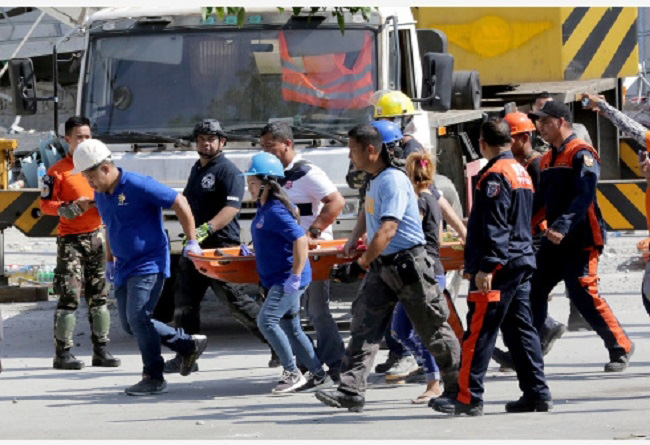


|
|
|
|
Heavy equipment and search dogs were used as dozens of
firefighters, military and civilian rescuers shifted through mangled metal
and lumps of concrete in Porac, a town 110 km (68 miles) north of Manila,
where 12 people were killed by a 6.1 magnitude earthquake that struck on
April 22.
Two people were rescued and carried out on stretchers on April
23, adding to seven found alive and four found dead overnight after higher
levels caved in on a ground-floor supermarket in Porac, killing five people.
Seven were killed elsewhere in the town.
Another, stronger earthquake with a magnitude of 6.5 struck in
Samar island in the central Philippines on April 23 afternoon, but there were
no reports of injuries or major damage.
The national disaster agency said the Monday (April 22)
earthquake injured 81 people and damaged 29 buildings across Luzon island,
with 14 people reported missing.
An investigation was underway into why the supermarket building
collapsed so easily when most structures suffered only superficial damage
from a quake that officials said was the biggest the town had ever felt.
The government declared Tuesday (April 23) a holiday for civil
servants in Metro Manila to allow for safety inspections of buildings. Foreign
exchange trading was suspended and a treasury bond auction cancelled.
The Philippines, which lies along the "Pacific Ring of
Fire," has numerous active faults and trenches on both sides of the
archipelago.
During the last several decades, the Philippines has suffered
several devastating earthquakes.
In 1968, about 200 people died when the Ruby Tower collapsed in
a 7.3-magnitude earthquake in Manila.
More than 6,000 people died when a tsunami caused by a
7.9-magnitude earthquake in the Moro Gulf in Mindanao in the southern
Philippines hit them in 1976.
A 7.8-magnitude quake killed around 2,000 people in the northern
and central Luzon in July 1990.
|
Source: NDO